Machine Envy
Last week, while helping to build 20 enormous Roubo workbenches, Megan Fitzpatrick was able to experience the benefits of the machines outfitted in an industrial woodworking shop.
Among the many benefits of taking a woodworking class is getting to see some incredible shops, and perhaps use tools and machines you not only don’t have at home, but perhaps have never before seen. Earlier this month, I was in Barnesville, Ga., for the third “French Oak Roubo Project” (FORP). I was one of a handful of “enthusiasts” (read: teachers) helping 20 “participants” (read: students) to build traditional French benches like those shown in Andre-Jacob Roubo’s 17th-century book “l’Art du Menuisier” (though with modern Benchcrafted vises and Crucible Tool holdfasts) using 200-year-old oak sourced from France. (Legend has it that it’s actually Quercus alba – American white oak sent to France by Thomas Jefferson that was planted at Versailles.)
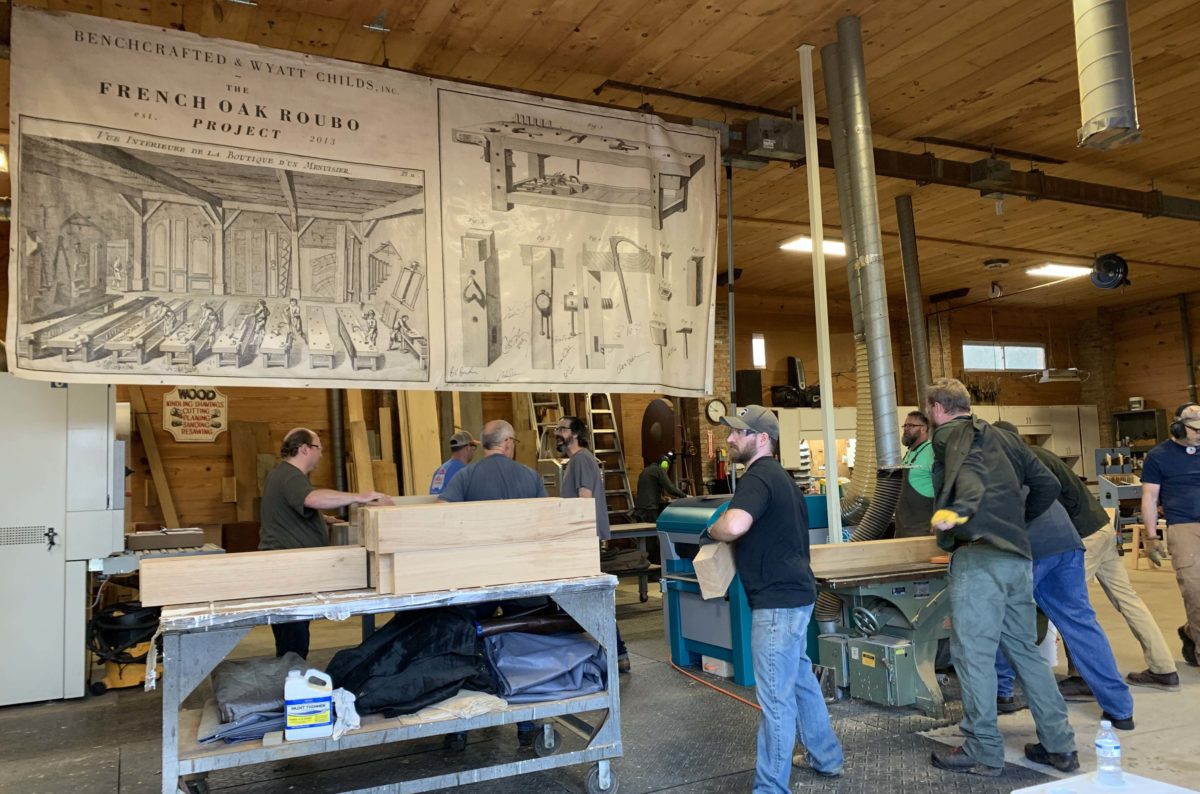
This was beefy stuff, brought over by Wyatt “Bo” Childs, who imports architectural salvage, stone antiquities, antique furniture, and other lovely stuff from England and the European continent. Beefy bench parts require large machines (if one wants to build a workbench in one week), and Bo has them—industrial equipment that he and his team use to make custom architectural elements and flooring.
I’d heard of all the machines he’d put at our disposal—but I’d not seen them all, much less used them. But oh boy would I love to have these at my disposal for prepping stock for classes!
I was most impressed by (and second-most covetous of) the vintage Oliver Straitoplane. It has two cutterheads that work in succession as both a jointer and a planer to flatten wood top and bottom in one pass—a pass that can remove as much as 1/2 in. from each surface. This monster machine made quick work of flattening the 5-in.-plus thick by approximately 20-in.-wide (and up to 9 ft. long) benchtop slabs—a huge time saver. Imagine having to wrestle those tops over a jointer and through a planer in multiple passes, or having to flatten both sides by hand.
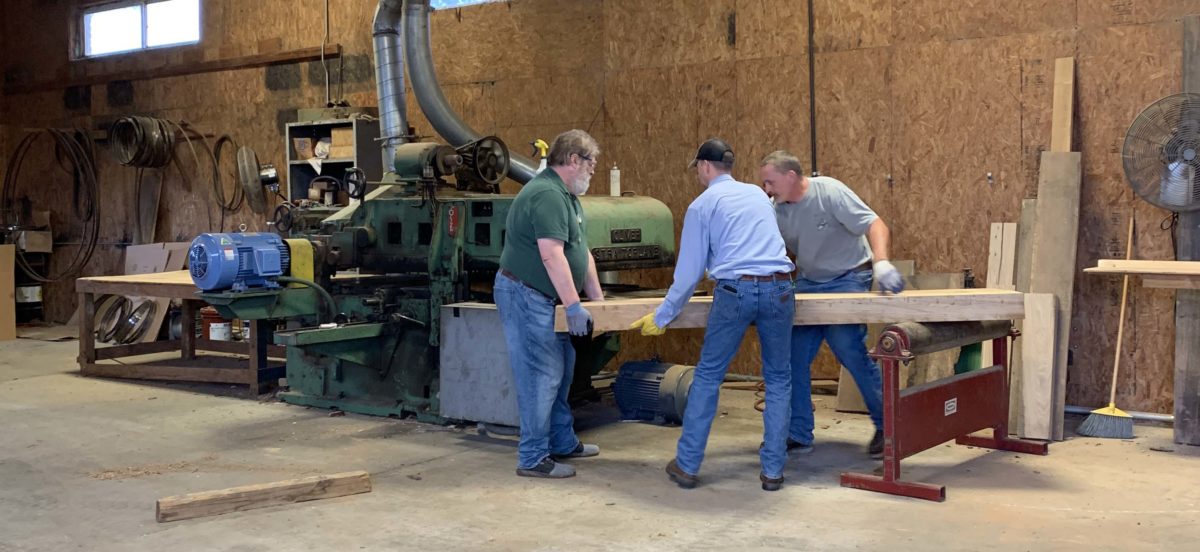
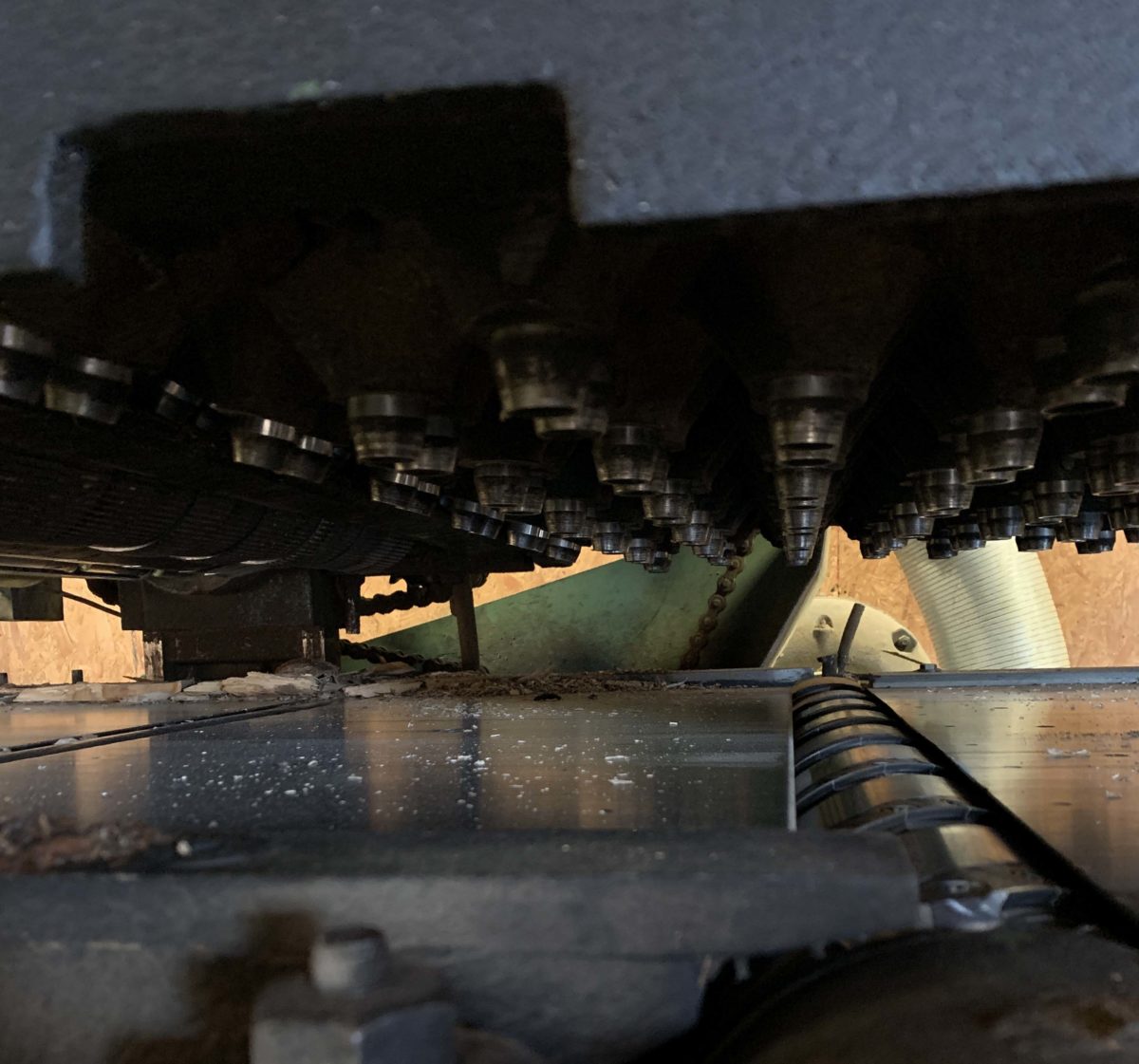
I was also quite taken with the Northtech Precision Straight Line Rip Saw. With this machine, one can quickly cut a straight edge on any board. You simply line up the laser along the edge of a board (or wherever you want the cut), and you can quickly take off a waney edge. Then set the fence to your desired board width, et voila. While this isn’t a huge time saver when working on a one-off project, when you have to mill material for 20 benches, well, it’s a godsend. It does, however, take a little practice to get that laser aligned just where you want it … before the feed rollers grab the wood from your hands.
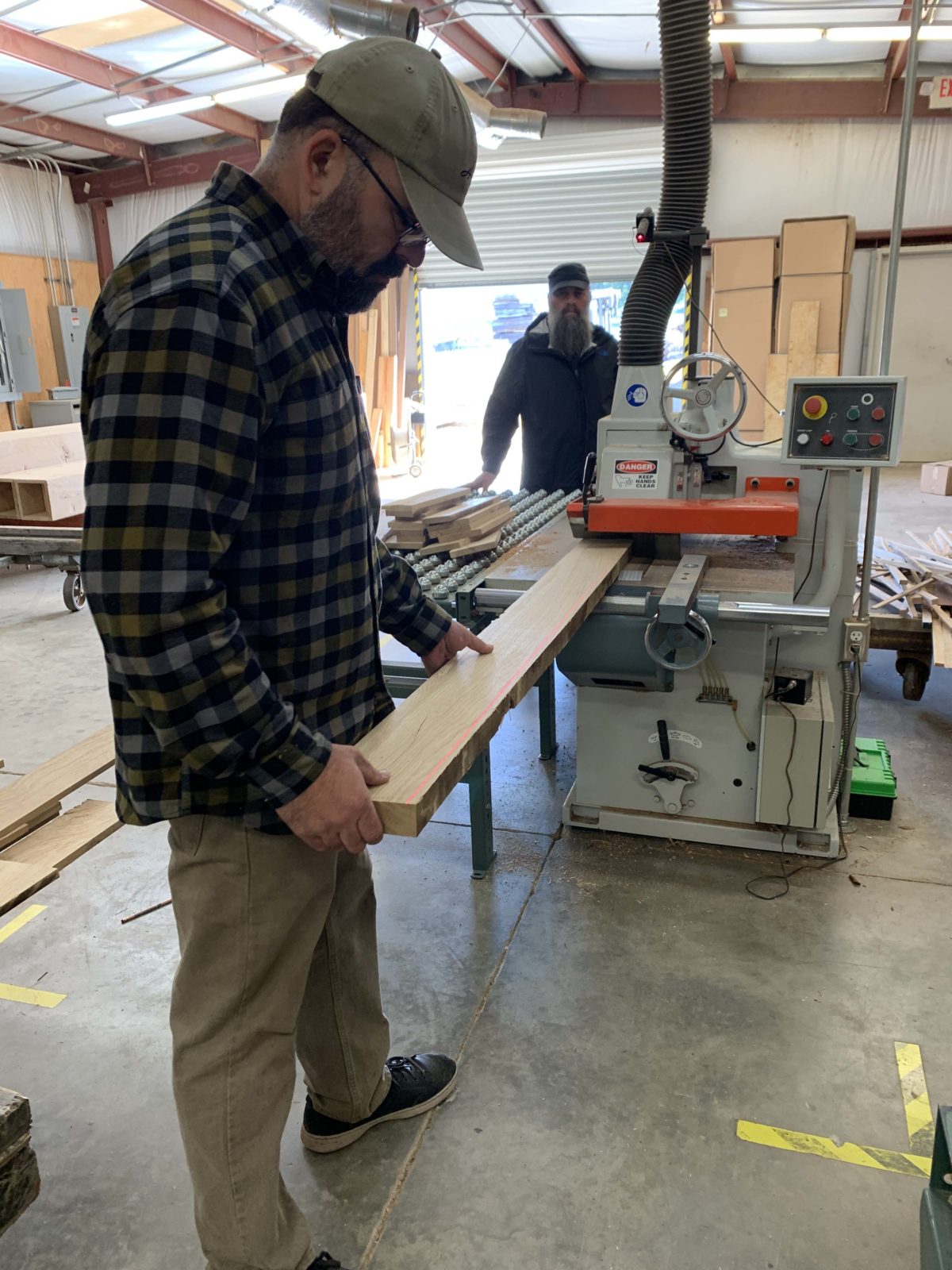
While I rarely have use for a spindle molder (even if I had one, I still would have outsourced the 280 ft. of base molding for my house renovation to my local millworks shop), it was awesome to see the Martin T12 cut 160 1-in. by 2-in. tenons in one pass each, and with perfectly clean shoulders. I approached it with a healthy dose of fear—but the pneumatic clamp holds the work firmly in place, and the jig Will Myers rigged up made it perfectly safe and foolproof.
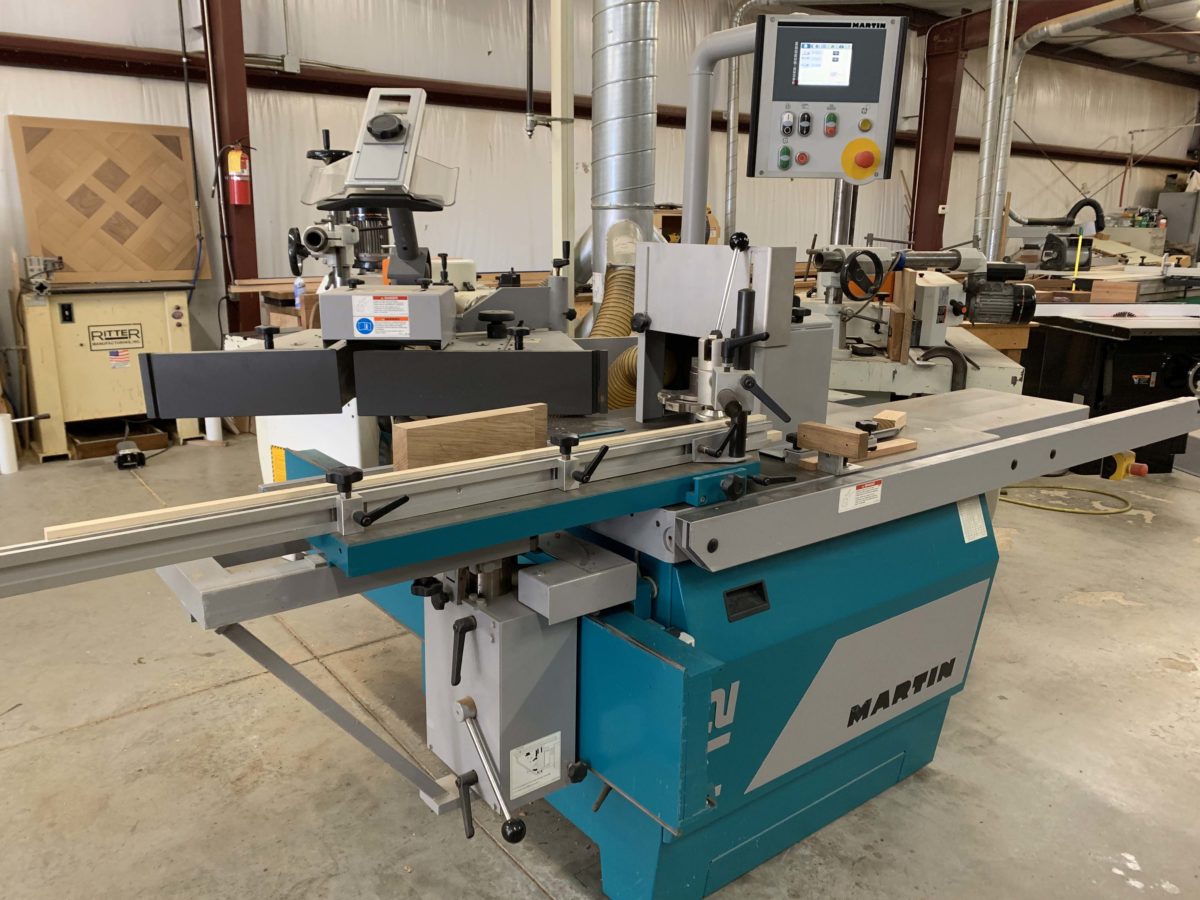
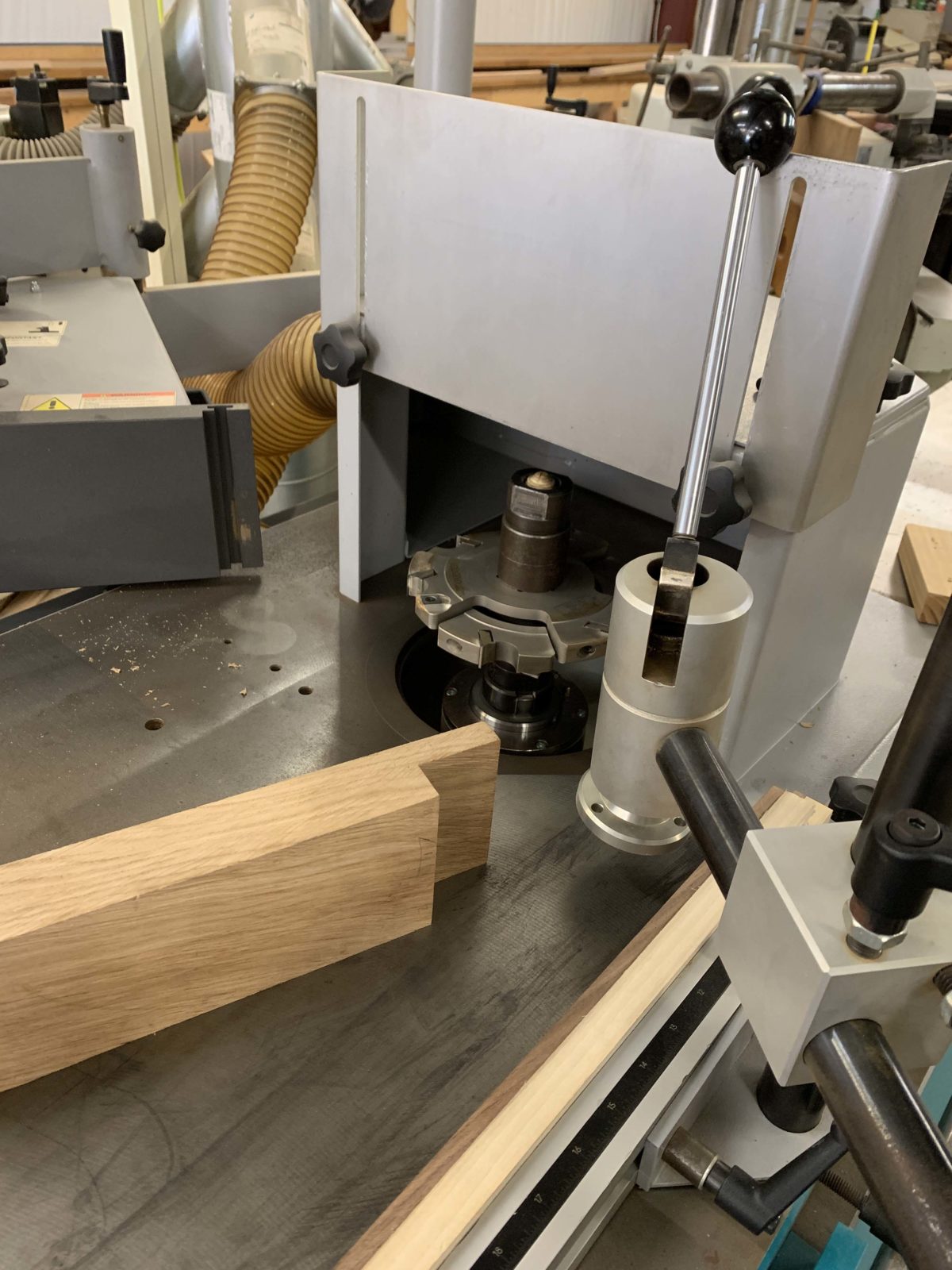
The shop out of which I usually work (which belongs to Christopher Schwarz) has a restored 12-in. Northfield jointer, so I’m used to working on a nice vintage machine—but the 20-in. machine in Bo’s shop was impressive due to its size. The fence on it needs some work, so we clamped on a large, flat piece of oak to guide the front edges of the workbench tops across the machine to square them to the top and bottom. It takes a lot of people to hold these big workpieces tight to said fence!
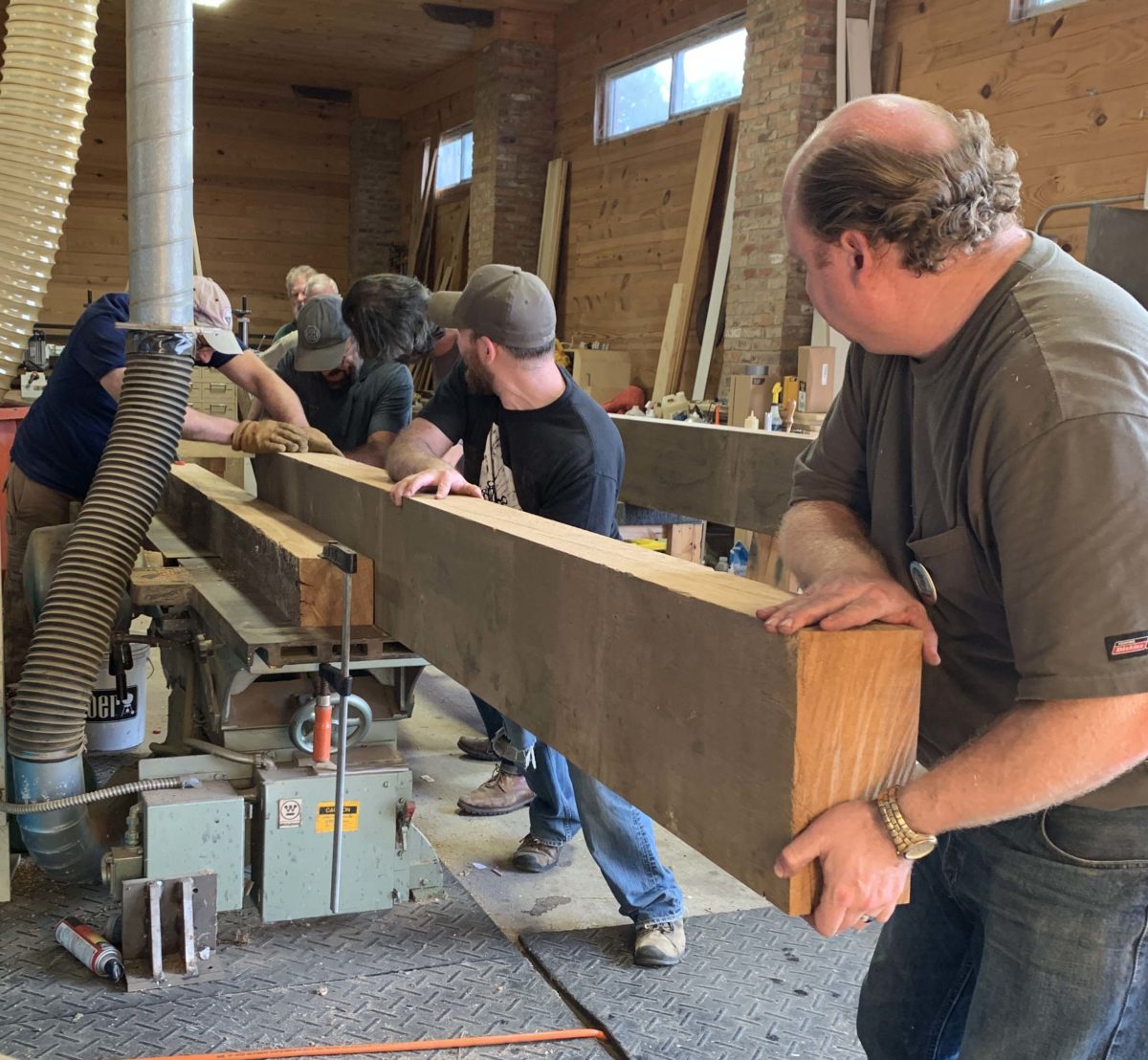
I’m also pretty familiar with planers … just not those on the scale of the Martin T45. On the planer in our shop, I never trust the measurement scale. On this planer, with its precise digital controls, I do. Plus, the T45 takes a much larger workpiece than the comparatively tiny 15-in. version in our shop. This machine would come in awfully handy for processing 24-in.-wide tool chest stock!

A tool that impressed me—but that I can come up with absolutely no need to own—is the Mafell portable bandsaw. It is, quite frankly, too much weight for me to handle with precision—but enthusiasts Christopher Schwarz and Will Myers wielded it to kerf out waste in the benchtop dovetail slots, and to cut everyone’s benchtops to final length. I used it to cut one kerf, then happily turned it over to those with both more height and muscle. Still, this machine is undeniably cool.
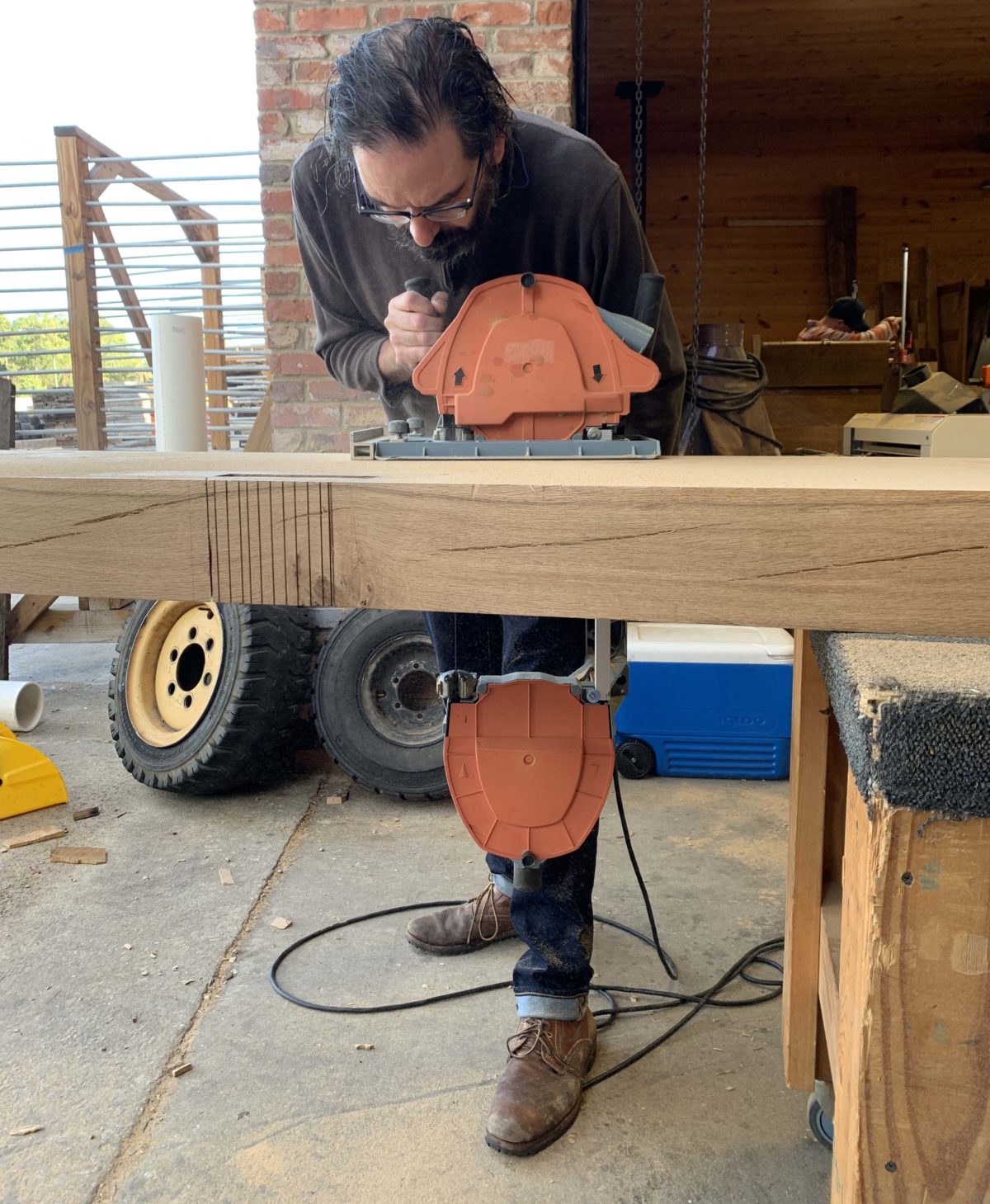
I don’t actually covet a Wood-Mizer or other portable mill, but I do wish I had a nearby friend who had one! While I rarely have a downed tree that needs slabbing, the few times I have been offered such material, I’ve had to regretfully decline.
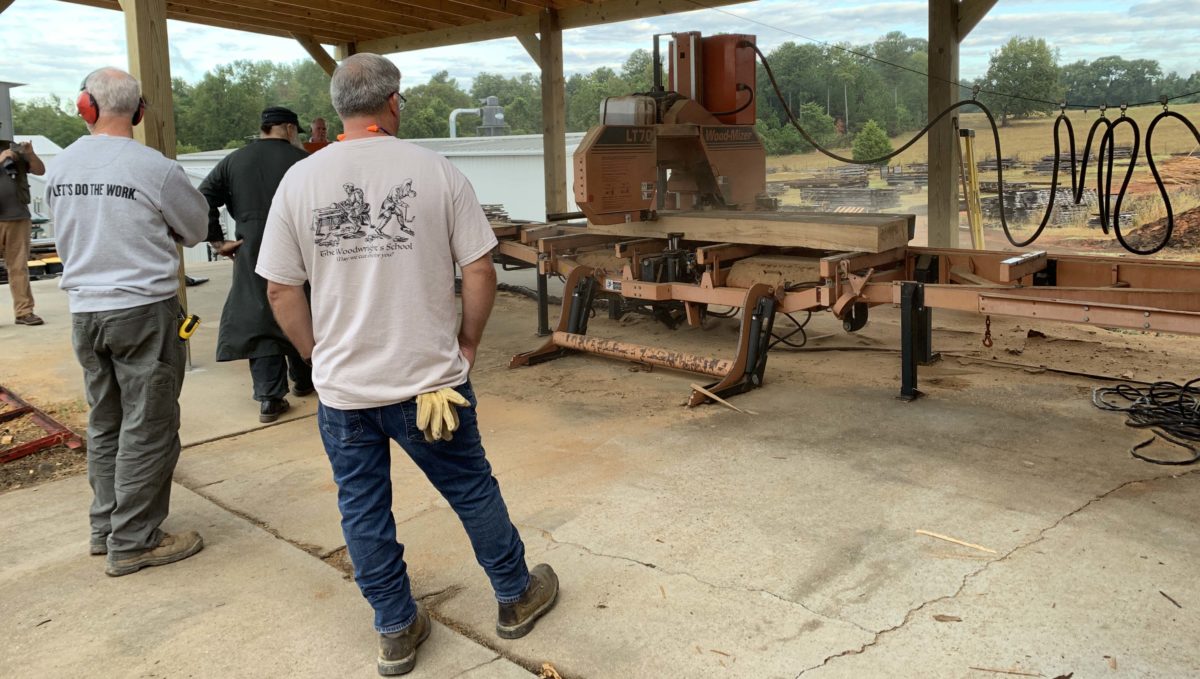
But what I coveted most at Bo’s place (at least among-the woodworking-related stuff) was the multiple and awesome central dust-collection systems. The powerful suction sucked up almost all the dust from the machinery use and deposited in one of several sawdust mountains outside the shop buildings. October 14-18, 2019, goes down in my personal woodworking history as the only week in which I’ve not had to change out a collection bag.
Fine Woodworking Recommended Products

Ridgid EB4424 Oscillating Spindle/Belt Sander

DeWalt 735X Planer
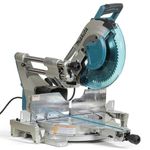
Makita LS1219L Miter Saw





















Comments
Shuweeeet! Would love to make one of those! All I need to claim the rest of the garage for my purposes. LOL
Meghan, thank you for the overall summary and pictures. I followed in semi-real time on IG, but it is nice to see it all in one go. So cool you could make the scene.
Great stuff, some I've never seen either. Thanks!
I was surprised to see, in all those pictures, only one guy wearing hearing protection.
Log in or create an account to post a comment.
Sign up Log in